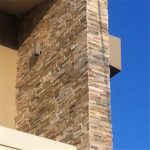Introduction
Asian fusion cultured stone is a unique and versatile building material that combines traditional Asian design elements with modern construction techniques. This innovative approach to architecture has gained popularity in recent years for its aesthetic appeal, durability, and sustainability. In this article, we will delve into the world of Asian fusion cultured stone, exploring its history, characteristics, applications, and benefits.
History of Asian Fusion Cultured Stone
The concept of using stone as a building material has been around for centuries in Asia. Traditional Asian architecture often incorporates natural stone elements, such as granite, marble, and limestone, in structures like temples, palaces, and gardens. These materials are valued for their beauty, longevity, and cultural significance.
In recent years, there has been a growing interest in blending traditional Asian design elements with contemporary construction methods to create a new style of architecture known as Asian fusion. This approach seeks to preserve the essence of traditional Asian architecture while incorporating modern materials and technologies.
One of the key innovations in Asian fusion architecture is the development of cultured stone. Cultured stone is a manufactured product that mimics the look and feel of natural stone but is lighter, more affordable, and easier to work with. By combining the aesthetics of natural stone with the practicality of manufactured materials, Asian fusion cultured stone offers a unique blend of beauty and functionality.
Characteristics of Asian Fusion Cultured Stone
Asian fusion cultured stone is known for its diverse range of colors, textures, and patterns, which can be customized to suit a wide variety of architectural styles. Whether you are looking to create a sleek modern facade or a traditional Asian-inspired garden, there is a cultured stone option that will meet your needs.
In addition to its aesthetic versatility, Asian fusion cultured stone is also highly durable and weather-resistant. This makes it an ideal choice for exterior applications, such as cladding, paving, and landscaping. Cultured stone is engineered to withstand the elements and maintain its appearance over time, ensuring that your building will look beautiful for years to come.
Furthermore, Asian fusion cultured stone is eco-friendly and sustainable. Unlike natural stone, which requires extensive quarrying and transportation, cultured stone can be produced locally using recycled materials. This reduces the environmental impact of construction projects and helps to conserve natural resources.
Roofing Slate For Sale of Asian Fusion Cultured Stone
Asian fusion cultured stone can be used in a wide range of architectural applications, both indoors and outdoors. Some common uses include:
1. Exterior Cladding: Cultured stone is often used to clad the exterior of buildings, providing a durable and aesthetically pleasing finish. Whether you are designing a modern office tower or a traditional Japanese tea house, cultured stone can add a touch of elegance and sophistication to your project.

2. Landscaping: Cultured stone is a popular choice for landscaping projects, such as creating pathways, retaining walls, and water features. Its natural appearance and weather-resistant properties make it well-suited for outdoor environments, where it can enhance the beauty of gardens, parks, and public spaces.
3. Interior Design: Cultured stone can also be used indoors to create feature walls, fireplaces, and accent pieces. Its versatility in terms of colors and textures allows designers to create unique and visually appealing spaces that reflect the aesthetic preferences of their clients.
Benefits of Asian Fusion Cultured Stone
There are several key benefits to using Asian fusion cultured stone in architectural projects:
1. Aesthetic Appeal: Asian fusion cultured stone offers a timeless and elegant aesthetic that can enhance the beauty of any building or landscape. Its natural appearance and rich textures create a sense of warmth and sophistication that is unmatched by other building materials.
2. Durability: Cultured stone is highly durable and resistant to wear and tear, making it an ideal choice for high-traffic areas and outdoor applications. It is also resistant to fading, chipping, and staining, ensuring that your building will maintain its appearance for years to come.
3. Sustainability: Cultured stone is an eco-friendly choice for environmentally conscious builders and designers. By using recycled materials and minimizing waste, cultured stone helps to reduce the environmental impact of construction projects and promote sustainable practices in the building industry.
4. Cost-Effectiveness: Compared to natural stone, cultured stone is more affordable and easier to work with, making it a cost-effective choice for construction projects. Its lightweight properties also reduce transportation costs and installation time, saving both time and money for builders and developers.
Conclusion
Asian fusion cultured stone is a versatile and innovative building material that combines the beauty of natural stone with the practicality of manufactured products. With its diverse range of colors, textures, and patterns, cultured stone offers endless design possibilities for architects, designers, and builders looking to create unique and visually stunning projects.
Whether you are designing a modern office building, a traditional Japanese garden, or a contemporary residential home, Asian fusion cultured stone can help you achieve your design goals while also promoting sustainability and environmental responsibility. By embracing the beauty and elegance of Asian fusion cultured stone, you can create buildings and landscapes that stand the test of time and inspire admiration for generations to come.
